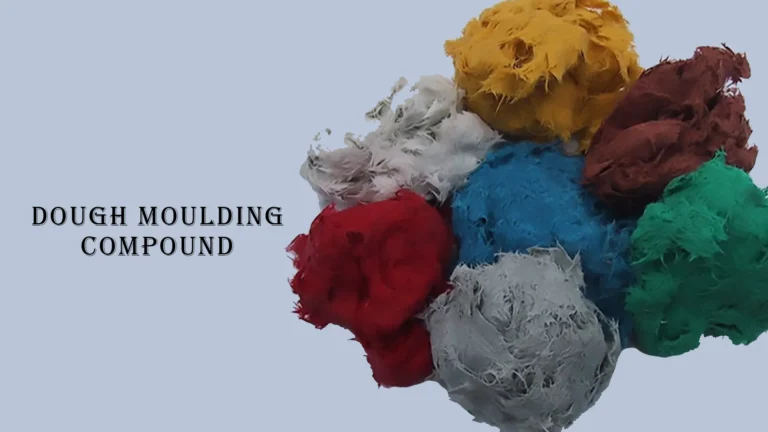Dough Moulding Compound (DMC) is a type of thermosetting material that is primarily composed of a mixture of resins, fillers, and additives. It is commonly used for casting and moulding applications due to its ability to be shaped into various forms and its durability after curing. DMC can be used in a range of industries, including automotive, construction, and electrical sectors, for producing components such as decorative fixtures, insulators, and electrical enclosures.
TRENDING
Geekzilla Radio: Your Ultimate Destination For Geek Culture
Properties Of Dough Moulding Compound
Understanding the properties of Dough Moulding Compound is essential for achieving optimal results in your projects.
Composition
DMC typically consists of several key components:
- Resins: The primary binding agents that give DMC its strength and durability.
- Fillers: Materials added to improve certain properties, such as thermal stability and density.
- Additives: These include pigments, plasticizers, and curing agents that enhance the performance and aesthetic appeal of the compound.
Physical Properties
Dough Moulding Compound boasts several desirable physical properties:
- Thermal Resistance: DMC can withstand high temperatures without deforming, making it suitable for various applications.
- Mechanical Strength: The cured product exhibits high tensile and compressive strength.
- Chemical Resistance: DMC is resistant to many chemicals, making it ideal for use in harsh environments.
- Aesthetic Versatility: DMC can be easily colored and finished, allowing for a wide range of aesthetic applications.
Applications Of Dough Moulding Compound
Dough Moulding Compound is utilized in various applications due to its versatility and strength. Some common uses include:
- Automotive Parts: Used for manufacturing components such as dashboard elements, trim parts, and housings.
- Electrical Components: Ideal for producing insulators, connectors, and switchgear.
- Construction: Employed in creating decorative architectural elements and structural components.
- Consumer Goods: Used for crafting items like toys, kitchenware, and household appliances.
Preparing For Dough Moulding
Before beginning a project with Dough Moulding Compound, proper preparation is crucial to ensure a smooth workflow and high-quality results.
Workspace Setup
A clean and organized workspace is essential for working with DMC. Consider the following tips:
- Ventilation: Ensure the area is well-ventilated to minimize exposure to fumes from resins and additives.
- Surface Protection: Use protective covers on surfaces to avoid spills and contamination.
- Accessibility: Keep tools and materials within reach to streamline the moulding process.
Tools and Equipment
Having the right tools and equipment will greatly enhance your efficiency:
- Mixing Bowls: For combining components.
- Spatulas or Mixers: For thorough mixing of the compound.
- Moulds: Various types of moulds depending on the desired shape and finish.
- Protective Gear: Safety goggles, gloves, and masks to protect against chemicals.
Mixing Dough Moulding Compound
The mixing process is critical to ensure the proper consistency and performance of the Dough Moulding Compound.
Proportions
Adhering to the correct proportions of resin, fillers, and additives is essential for achieving the desired properties. Always refer to the manufacturer’s instructions for specific ratios.
Mixing Techniques
- Manual Mixing: Use a spatula to thoroughly mix the components until homogeneous.
- Mechanical Mixing: For larger batches, a mechanical mixer can ensure uniform consistency.
Moulding Techniques
The method of moulding you choose will depend on your specific project requirements.
Hand Moulding
Hand moulding is ideal for small-scale projects or intricate designs. The process involves:
Preparing the Mould: Ensure it is clean and, if necessary, coated with a release agent.
Forming the Shape: Manually press the mixed DMC into the mould, ensuring even coverage.
Machine Moulding
For larger production runs, machine moulding can be more efficient. This method typically involves:
- Injection Moulding: DMC is heated and injected into a mould under pressure, creating precise shapes.
- Compression Moulding: The compound is placed in an open mould and subjected to heat and pressure, allowing it to cure.
Curing And Finishing
Once the moulding process is complete, curing and finishing are necessary for achieving a high-quality product.
Curing Process
Curing is the process of allowing the DMC to harden and achieve its final properties. This can take several hours to days, depending on the thickness of the material and environmental conditions. Ensure that:
- The mould is placed in a controlled environment with optimal temperature and humidity.
- Follow manufacturer guidelines for curing times.
Finishing Techniques
Finishing enhances the aesthetic quality of the DMC product. Common techniques include:
- Sanding: Smooth out any rough edges or surfaces.
- Painting: Apply paints or coatings to achieve the desired color and finish.
- Polishing: Use polishing compounds to enhance shine and durability.
Common Issues And Solutions
While working with Dough Moulding Compound, you may encounter several issues. Here are some common problems and their solutions:
- Bubbles in Mould: This can occur if the mixture is not adequately mixed or if air is trapped during pouring. To reduce bubbles, mix slowly and use a vacuum chamber if possible.
- Incomplete Curing: Ensure the correct temperature and humidity levels are maintained during curing. If the product remains soft, it may require additional curing time.
- Cracking: This can result from rapid temperature changes or improper mixing. Ensure a gradual temperature change and proper mixing techniques.
Safety Precautions
Working with Dough Moulding Compound involves handling chemicals that can be hazardous. Always follow these safety precautions:
- Wear Protective Gear: Use gloves, goggles, and masks to protect against chemicals.
- Avoid Skin Contact: Wash hands thoroughly after handling DMC.
- Store Properly: Keep materials in a cool, dry place away from direct sunlight and heat sources.
Conclusion
Dough Moulding Compound is a powerful material that offers numerous advantages in various industries. By understanding its properties, preparing effectively, and using proper techniques, you can create high-quality molded products that meet your specifications. Whether you are an experienced professional or a hobbyist, following these essential tips will help you achieve optimal results with DMC.
ALSO READ: Findom Websites: Your Ultimate Guide To Financial Submission
FAQs
What is Dough Moulding Compound?
Dough Moulding Compound (DMC) is a thermosetting material made from resins, fillers, and additives, used primarily for casting and molding applications. It is valued for its durability, thermal resistance, and aesthetic versatility.
What are the key properties of DMC?
DMC exhibits several key properties, including high thermal and mechanical resistance, chemical durability, and aesthetic versatility. These properties make it suitable for various applications in industries such as automotive, electrical, and construction.
How do I prepare for using DMC?
To prepare for using DMC, set up a clean and organized workspace with proper ventilation, protect surfaces, and gather necessary tools and equipment, including mixing bowls, spatulas, moulds, and protective gear.
What are the common moulding techniques for DMC?
Common moulding techniques for DMC include hand moulding for small or intricate designs and machine moulding methods like injection and compression moulding for larger production runs.
What safety precautions should I take when working with DMC?
When working with DMC, always wear protective gear such as gloves, goggles, and masks to avoid contact with chemicals. Ensure proper ventilation in your workspace and store materials safely to prevent hazards.

